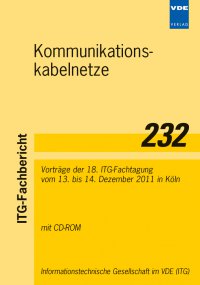Cloud Services need Symmetrical Data Rates: enhancing the Network-Compatibility of SHDSL.bis and ADSL2+
Conference: Kommunikationskabelnetze - 18. ITG-Fachtagung
12/13/2011 - 12/14/2011 at Köln, Deutschland
Proceedings: Kommunikationskabelnetze
Pages: 6Language: englishTyp: PDF
Personal VDE Members are entitled to a 10% discount on this title
Authors:
Bianchi, Roberto; Herrmann, Georg (Broadband United GmbH, Pretzfelderstr. 21, 91320 Ebermannstadt, Deutschland)
Abstract:
Regulation and planing are two invisible yet decisive factors that strongly influence the technological and commercial success of communication networks. This is particularly true for unbundled networks, in which regulation plays a central role in ensuring the stability of network services and applications. Modern cloud services offer integrated solutions for Voice-traffic (IP Centrex), eMail-Servers, data and application servers (like Office). Connecting cloud services requires fast internet access featuring high symmetrical data rates. Regardless of the many efforts to introduce optical fiber in communication networks, the vast majority of symmetric data connections will base, in the next years, on classic copper-based transmission technologies. Business customers, will be typically served using the established SHDSL technology and its successor SHDSL.bis. This new technology allows to easily scale the obtained data rates to n-times 5 Mbps through bundling of twisted pairs. However, the SHDSL and SHDSL.bis services undergo data rate restrictions in order to guarantee the network-compatibility with ADSL2+ operation. In this contribution we analyse the German regulation strategy for SHDSL and SHDSL.bis systems, with particular attention to the interaction between symmetric (SHDSL, eSHDSL) and asymmetric (ADSL, ADSL2+, VDSL2) systems. Based on measurements and information-theoretical considerations, we show that a modification of the current deployment-rules may lead to increased SHDSL-reach without any disturbance for symmetric DSL systems. The proposed new set of rules, which are compatible with the current regulation and do not require hardware upgrades, may lead to doubling the SHDSL data rates or, equivalently, to increasing the efficiency of the usage of copper resources up to hundred per cent.


